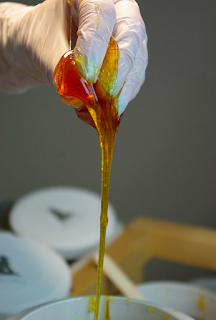Opportunity or Threat?
 My morning read often includes posts from the Business of Fashion @BoF. Today I was fascinated and saddened to read their latest piece The Dawn of Designer Botox, which discusses the normalisation of #injectables (#Botox and #dermalfillers) for #millennials. It begins “As Botox and dermal fillers become a more normalised part of millennial beauty regimes, injectables could be become a multi-billion dollar opportunity for established luxury players”.
My morning read often includes posts from the Business of Fashion @BoF. Today I was fascinated and saddened to read their latest piece The Dawn of Designer Botox, which discusses the normalisation of #injectables (#Botox and #dermalfillers) for #millennials. It begins “As Botox and dermal fillers become a more normalised part of millennial beauty regimes, injectables could be become a multi-billion dollar opportunity for established luxury players”.
Over the past few years, demand for non-surgical cosmetic procedures, largely driven by celebrity culture and social media, has increased rapidly in the UK and the USA right across the lifespan. An in-house doctor @HarveyNichols explains how women in their 20s are having cosmetic procedures in their lunchbreaks as a preventative measure. Another doctor suggest they are an extension of other routine ‘beauty’ procedures.
Describing cosmetic interventions as ‘routine’ normalises a phenomenon which is not in the least bit normal.
The article gives no space to possible underlying psychological reasons for seeking surgery or the patient’s degree of satisfaction with their appearance after the procedure. Why do patients return? Because they are satisfied or because they are not satisfied? Is the driving force a psychological need for ‘perfection’ which cannot be met through cosmetic interventions?
Valued at $3 billion currently, the injectables market is predicted to reach $10 billion, but according to BoF, beauty conglomerates like L’Oréal, Coty, LVMH and Estée Lauder are slow off the mark in terms of instigating “a branding revolution within the injectables market”. This could be as a result of legislation in place to protect potential customers, but how strictly it is adhered to is unknown. Do read the eye-opening 2017 report from The Nuffield Council on Bioethics Cosmetic Procedures: Ethical issues which concluded that both supply and demand need to be made safer.
Unfortunately, we live in an increasingly appearance obsessed society where superficiality reigns. Yet the fashion industry seems to be moving towards appreciation for authenticity and diversity not least because of the pressure exerted by those who have been misrepresented, underrepresented or simply ignored.
Can the ‘beauty’ industry sustain its obsession with a youthful appearance that is driving the demand for cosmetic interventions? After all we are programmed to pay attention to objects that are different and not to those which are the same.
Will people get bored of seeing faces which resemble each other?
_________________________________________________________________________________
[Originally published at psychology.fashion]
Professor Carolyn Mair PhD is a
freelance consultant to industry and education on matters relating to human
behaviour particularly within the realm of fashion. Prior to becoming
freelance, Carolyn created and led the world's only Masters courses to apply
psychology across the fashion industries at London College of Fashion,
University of the Arts London. Carolyn is a Chartered Fellow of the
British Psychological Society and Vice-Chair of their London and Home Counties
branch. Find out more at http://psychology.fashion.



Comments
Post a Comment